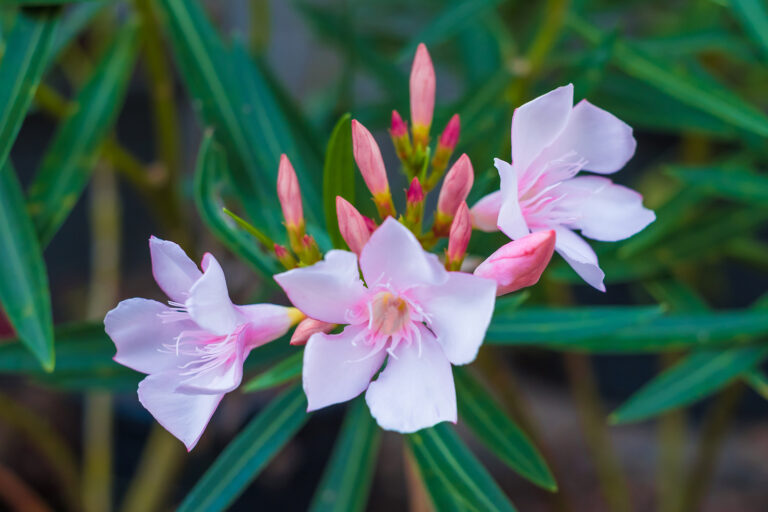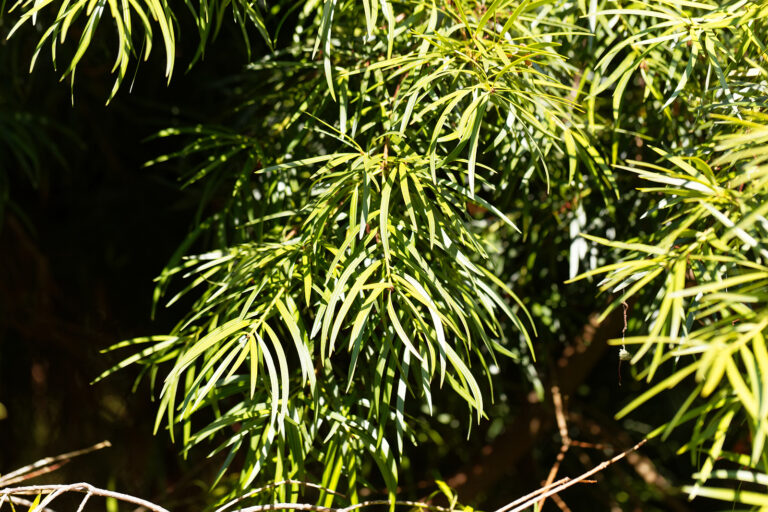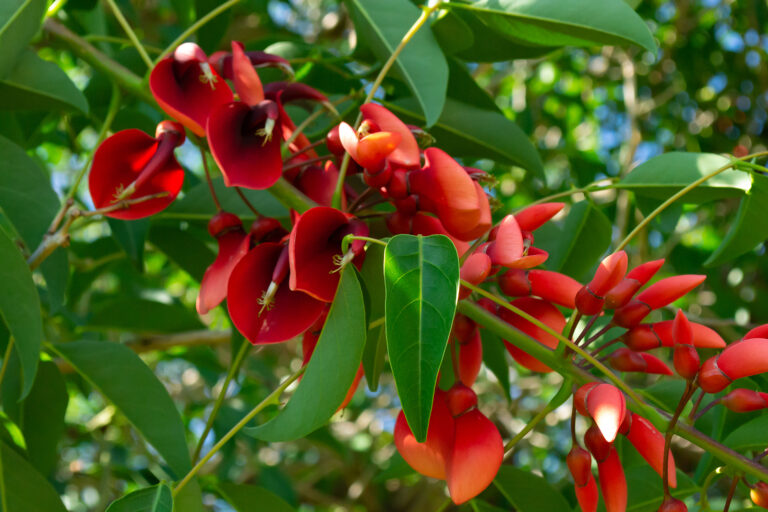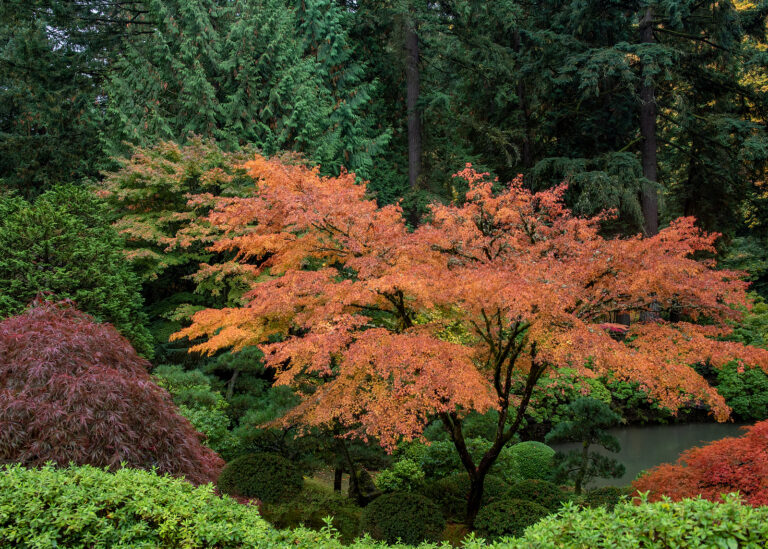How to Grow Cistus – Rock Rose
Cistus are evergreen shrubs with small to large flowers that resemble species roses. Showy, saucer-shaped papery flowers are commonly pink, purple-pink, or white. Cistus are commonly called rock roses.
Cistus will grow in average to poor and even rock soil, thus the common name rock rose. Cistus are Mediterranean natives. They are drought tolerant once established and can tolerate salty air near the seashore.
There are about 20 species in the Cistus genus. They range in size from low growing and spreading groundcovers to upright shrubs. Species have yielded many cultivars well-suited for gardens.
Cistus can be used for erosion control. They can be planted along driveways and near foundations. They are drought-tolerant once established and are considered fire retardant.

Get to know Cistus
- Plant type: Evergreen shrubs
- Growing zones and range: Zones 8 to 10
- Hardiness: Hardy to Zone 8
- Height and width: 2 to 5 feet (.6-1.5) tall and 5 to 8 feet (1.5-2.4m) wide depending on the variety
- Flowers: Silky, saucer-shaped flowers with four or five petals may be solitary or bloom in flat-topped clusters; flowers can be white or pink often with yellow stamens and sometimes a spot of different color at the base.
- Bloom time: Bloom for a month or more in spring or early summer.
- Uses: groundcover plant, drought resistant; adapts to desert and coastal situations.
- Common name: Rock-rose
- Botanical name: Cistus
- Family name: Cistaceae
- Origin: Mediterranean region
Where to plant Cistus
- Plant cistus in full sun.
- Cistus will grow in average to poor soil; loose and quick-draining soil is best.
- Cistus can tolerate salt spray but does not like humidity.
- Cistus prefers a soil pH of 5.6 to 6.0.
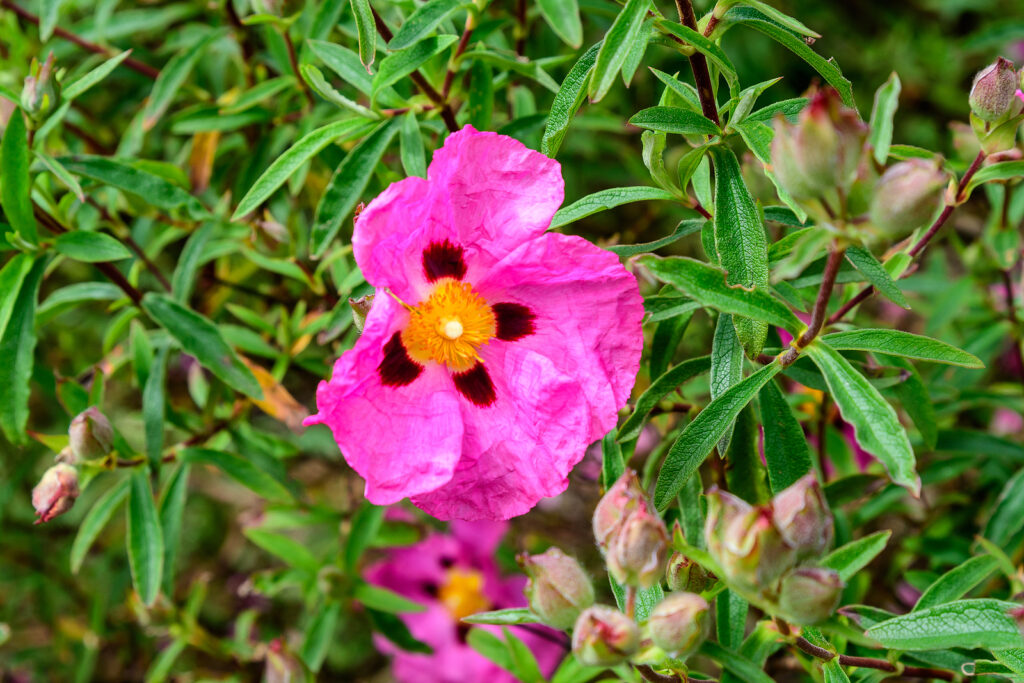
When to plant Cistus
- Set outdoors container-grown plants outdoors in spring or in fall in mild-winter regions.
- Sow seeds in spring.
- Start softwood cuttings in summer.
Planting and spacing Cistus
- Sow seeds 1/8 to ¼ inch deep in six-packs or flats filled with sterile seed-staring mix or polling soil. Sow seed outdoors in evenly prepared soil
- Space plants 3 to 8 feet (.9-2.4m) apart depending on the variety.
How to water and feed Cistus
- Keep the soil evenly moist until plants are established; drought-tolerant once established.
- Fertilize cistus with an all-purpose fertilizer in spring.
Cistus care
- Tip prune frequently to keep plants from becoming leggy.
- Periodically remove some older branches.
- Prune out all dead or damaged stems in spring.
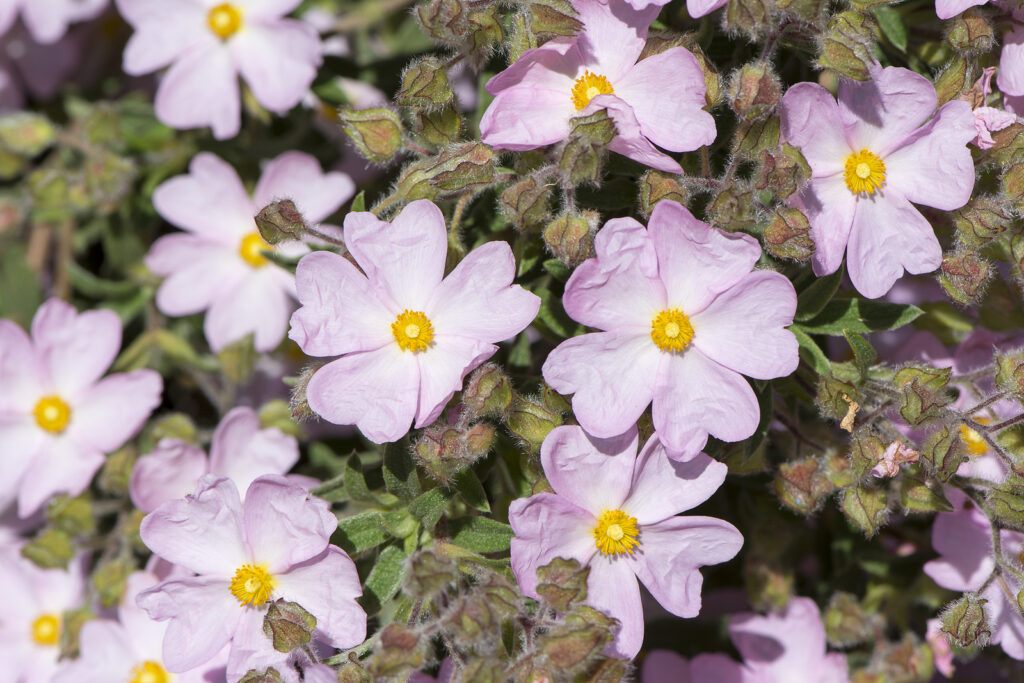
Cistus propagation
- Propagate from seeds in spring.
- Take softwood cuttings in summer; root cutting in a sterile seed-starting mix.
Cistus varieties to grow
- Cistus x corbariensis, also listed as C. x hybridus: hybrid spreading or rounded grow to 4 feet (1.2m) tall and wide; profuse 1½ inch white flowers with yellow centers from red buds.
- C. ladanifer, laudanum: grows upright to 5 feet (1.5m) tall and wide; sticky, aromatic blue-green leaves; white flowers to 4 inches across often dark red blotch at the base of each petal.
- C. x purpureus, orchid rock rose: hybrid grows to 36 inches (91cm) tall and wide; 3-inch dark pink flowers with a maroon base blooms in summer.
- C. salviifolius, sage-leaf rock rose: grows 12 to 24 inches (30-61cm) tall and up to 6 feet (1.8m) wide; white flowers with yellow markings at the base; fuzzy gray-gray leaves.
- C. x skanbergii: grows 24 to 36 inches (61-91cm) tall and 8 feet (2.4m) wide; gray-green lance-shaped leaves; powder pin 1-inch wide flowers bloom in late spring.


